Liberation and Remembrance
On 27 January, we commemorate the International Day of Commemoration in Memory of the Victims of the Holocaust and the 75th anniversary of the liberation of the Nazi German concentration and extermination camp Auschwitz-Birkenau.
„They all said that the Russians will be here soon” – as written after many years by Primo Levi, a prisoner remaining at KL Monowitz. However, he acknowledged right after that: „You could not really believe that” (S. Friedlander, The Years of Extermination. Nazi Germany and the Jews 1939 – 1945, Warsaw, 2010, p. 723). When the first Russian soldiers appeared in front of the KL Birkenau gates, some of the prisoners ran towards them: „We would grip and kiss them, crying with joy. We were saved” (N. Wachsmann, A History of the Nazi Concentration Camps, Warsaw, 2016, p. 611), as recollected by Otto Wolken, a prisoner of this camp.
The people cited above – despite the hopeless conditions and constant threats – survived. They regained their right to live at the end of January 1945. They did not know why – whether by accident, or by an act of grace from fate. Most likely the majority of the former prisoners, and maybe even all of them, constantly repeated a basic, fundamental question: „Should I survive if so many have died?” (Z. Jagoda, S. Kłodziński, J. Masłowski, the Prisoners of Auschwitz, Cracow – Wrocław, 1984, p. 131). That was a traumatic dilemma, which became an integral part of the Survivors. They were aware of the fact that in a place like concentration camp their survival was marginally contingent on, or was not contingent at all, things such as their role, work, physical or mental condition, subordination to the will of the German executioners or working as Sonderkommando. All that was merely a derivative of the circumstances in which the prisoners happened to live. This is probably why Primo Levi was so conscious in recalling his past at the camp: „A person in a gulag departs from hope, and even from trusting their own senses. At the camp, you don’t need to think because the dynamics of the events is usually unpredictable. Thinking is harmful as it gives rise to a capacity to feel, which is a source of pain and due to some prudent natural law it becomes dull because suffering crosses a certain border” (S.Friedlander, op.cit., p. 723).
The concentration camp system was a child of the Fascist and Nazi ideology and terror, which is why it could only be brought to an end after the collapse of the Nazi state. The fact that Germany was in fact in decline was manifested by the counteroffensive of the Allies (the Soviet Union, the British, and the Americans), together with defeats suffered by the German armies on all fronts in Europe. This process was accompanied by discovering concentration camps in Eastern Europe – the sites on which the Germans committed their crimes. The first camp to be liberated at the end of July 1944 was KL Lublin, commonly known as Majdanek. Even though German authorities and camp services managed to transport the majority of the living prisoners to other concentration camps, the attempts to destroy the evidence of the crimes (gas chambers and crematorium furnaces) and cover up their tracks (the remains, the belongings, piles of hair) were futile. Shortly after this, photos of this site were published in the Allied press. Since that time, covering up their crimes has become an imperative for the Germans.
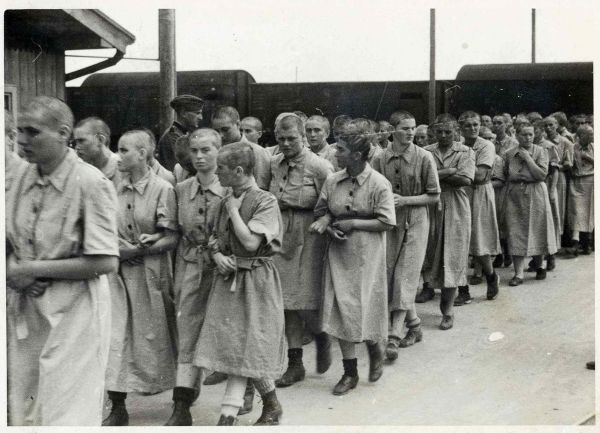
What was the outcome of going public with the truth about the German crimes? It certainly did not answer the question as to why countries belonging to the anti-Nazi coalition, such as the USA or the UK, failed to respond so far to the coverage of the evolving genocide. Back at that time, there were Hungarian Jews remaining at KL Auschwitz–Birkenau, murdered by hundreds of thousands. The persons who were aware of their future (or its end) were the Jews forced to work as Sonderkommando. When in September 1944 the holocaust of the Hungarian Jews was coming to an end, they knew that soon they would face the same fate: The SS began to perform a selection among them. They did not have any weapons to oppose to the two thousand ubiquitous SS troops, neither could they count on support from Poles, as the latter were counting on the imminent liberation by the Soviet Army that was closing in. They did not want to expose their fellow prisoners to collective responsibility, i.e. subsequent mass murders by the German executioners. The differences in the pressure between the concentration camp and the death factory crashed the collective resistance.
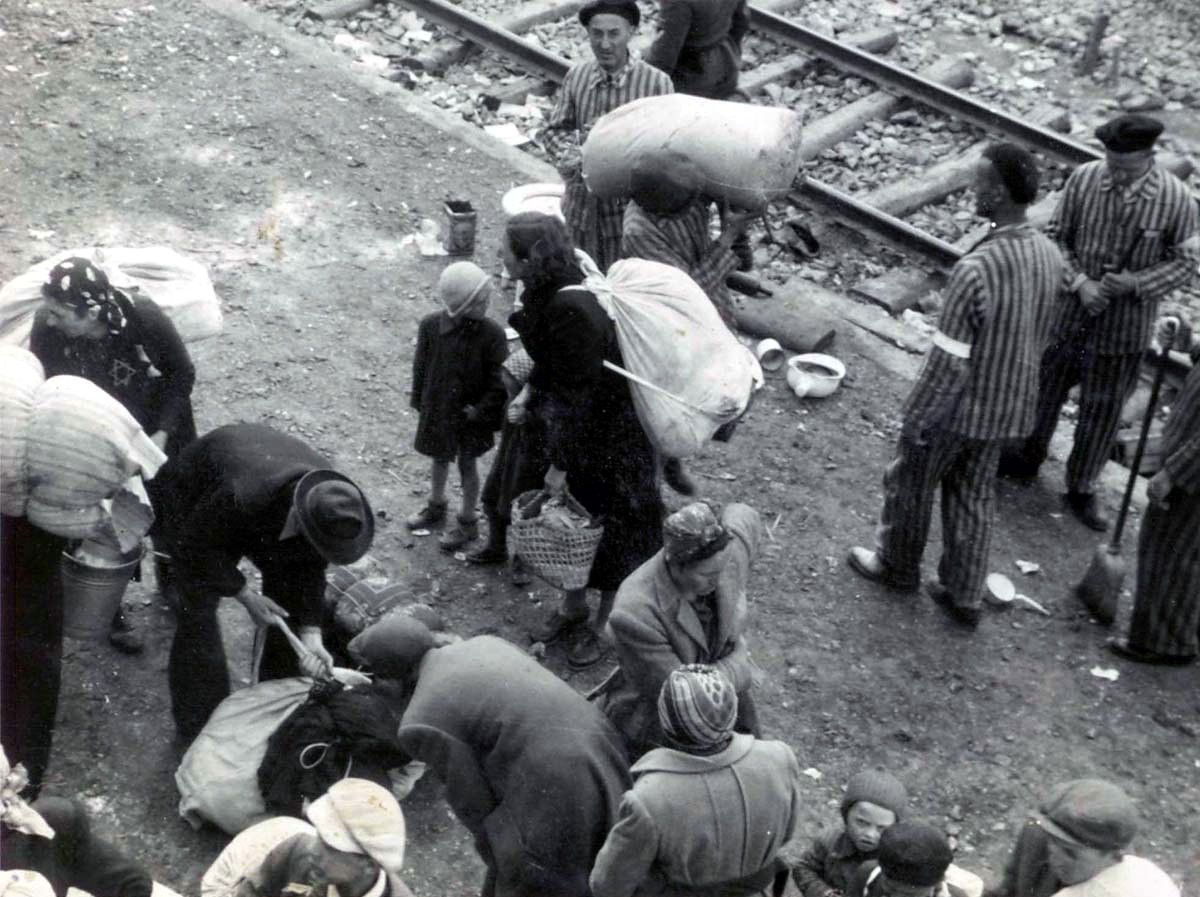
7 October 1944 was marked by the onset of a rebellion of the Jews working in Crematorium IV (they were supported by the Jews from Crematorium II). It did not last long. The rebellion was put down in no time. Two SS troops died, a dozen or so were injured. To the Jews, the price of this act was what truly mattered. Among around 900 people from Sonderkommando, hundreds died after putting up a fight, hundreds of others were murdered after the rebellion was crushed. Here is a recollection of Henryk Mandelbaum: „They told us to lie down facing the ground with our hands behind our back, and then they shot every third man. Some of my friends from the Sonderkommando lost their lives, the rest had to go back to work. To us, there never were any high hopes” (L. Rees, The Holocaust. A New History, Warsaw, 2018, p. 465 – 466). By the end of November, there were fewer than 100 survivors among the Sonderkommando.
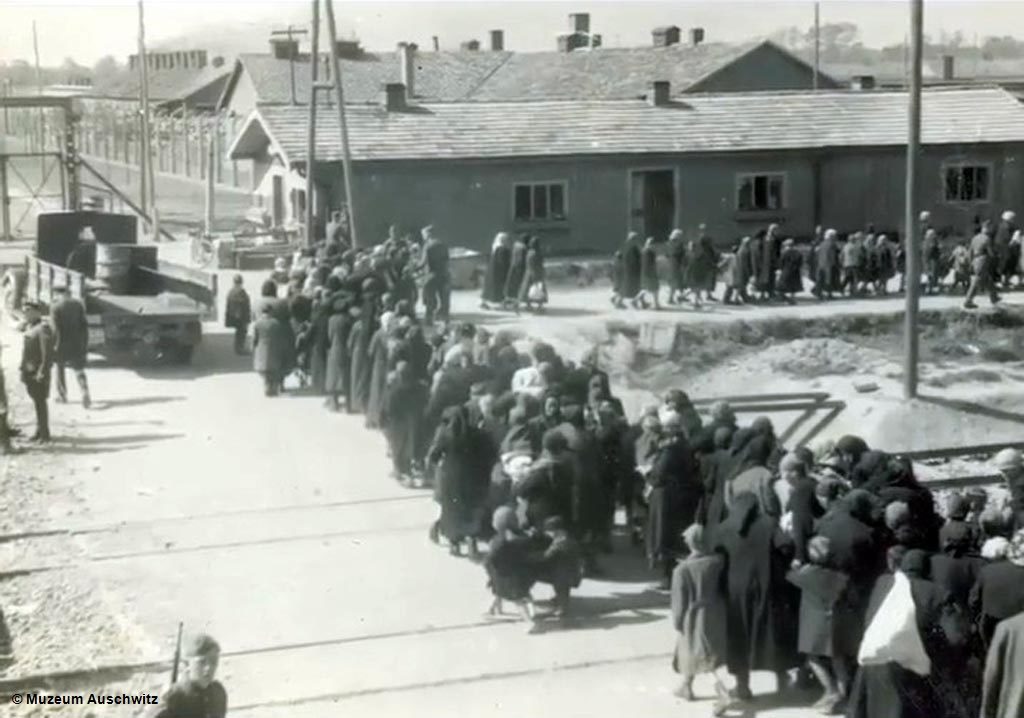
The German authorities were doing everything in their power not to make the same „mistake” they made at KL Lublin – i.e. to cover up the objective of KL Auschwitz–Birkenau. Despite the fact that this killing machine was still operational, since October the extension of the camp system was suspended. At the turn of October and November, the Germans stopped murdering people in gas chambers, and since November they began demolishing the Birkenau extermination complex. The „cleaning” of the site after the buildings burnt down, the removal of the remnants of bones and ashes of the victims, the emptying of the warehouses, and the transportation of the belongings stolen from the victims were accompanied by the dismantling of technical equipment of the crematoria and gas chambers and their subsequent transfer to KL Gross Rosen or KL Mauthausen (there were plans to build a new complex in the vicinity of the latter in order to proceed with the annihilation). Contrary to the rumours about a fierce resistance to the Soviet army, at the turn of December 1944 and January 1945 the Commandants left KL Auschwitz–Birkenau. Most of the SS followed. The reason they did it was not because they were ashamed of their heinous crimes; they did it to save their lives. The first weeks of 1945 were marked by the beginning of the last chapter in the history of KL Auschwitz– Birkenau, which was the largest concentration and extermination camp in Poland.
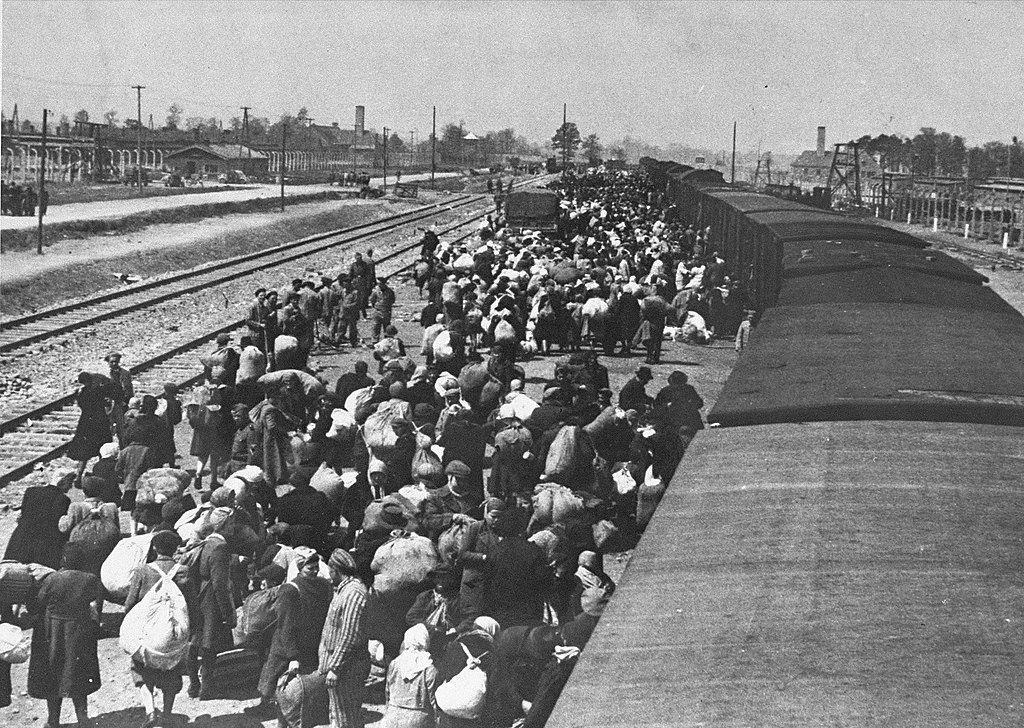
The last assembly, attended by nearly 70 thousand prisoners, took place on 17 January 1945. The day after was the last time that a new prisoner – a German criminal – was granted a camp number: 202 499 (D. Czech, Konzentrationslager Auschwitz – Historical Records, [in:] Auschwitz. Nazi Extermination Camp, Warsaw, 1981, p. 36). In the first and second decade of January, the SS murdered hundreds of prisoners. The last measure applied to implement the criminal action were so-called „death marches”. Between 17 and 23 January 1945, around 60 thousand prisoners were forced to leave the camp. During their march „to the West”, more than ten thousand people died of starvation, froze to death, or were killed by the SS. This was the fate of eight hundred prisoners from the Janinagrube sub-camp. Two hundred people made it to KL Gross Rosen after 18 days of marching. On 18 January, three thousand prisoners were banished from Birkenau. After nearly six weeks of marching, 280 Jews made it to Geppersdorf (Mielęcin near Zgorzelec) (W. Sofsky, The Order of Terror: The Concentration Camp, Warsaw, 2016, p. 57 – 58). „Those who could not walk anymore were shot” – according to coverage of a female Jew from Slovakia, Silvia Vesela – „The road was paved with corpses” (L.Rees, The Holocaust. A New History, Warsaw, 2018, p. 471 – 472). German guards, as instructed by Himmler, were to „see to it that no prisoner must be allowed to fall into the hands of the enemy alive” (S. Friedlander, The Years of Extermination. Nazi Germany and the Jews 1939 – 1945, Warsaw, 2010, p. 720 – 721). They wanted to fulfil their obligations diligently.
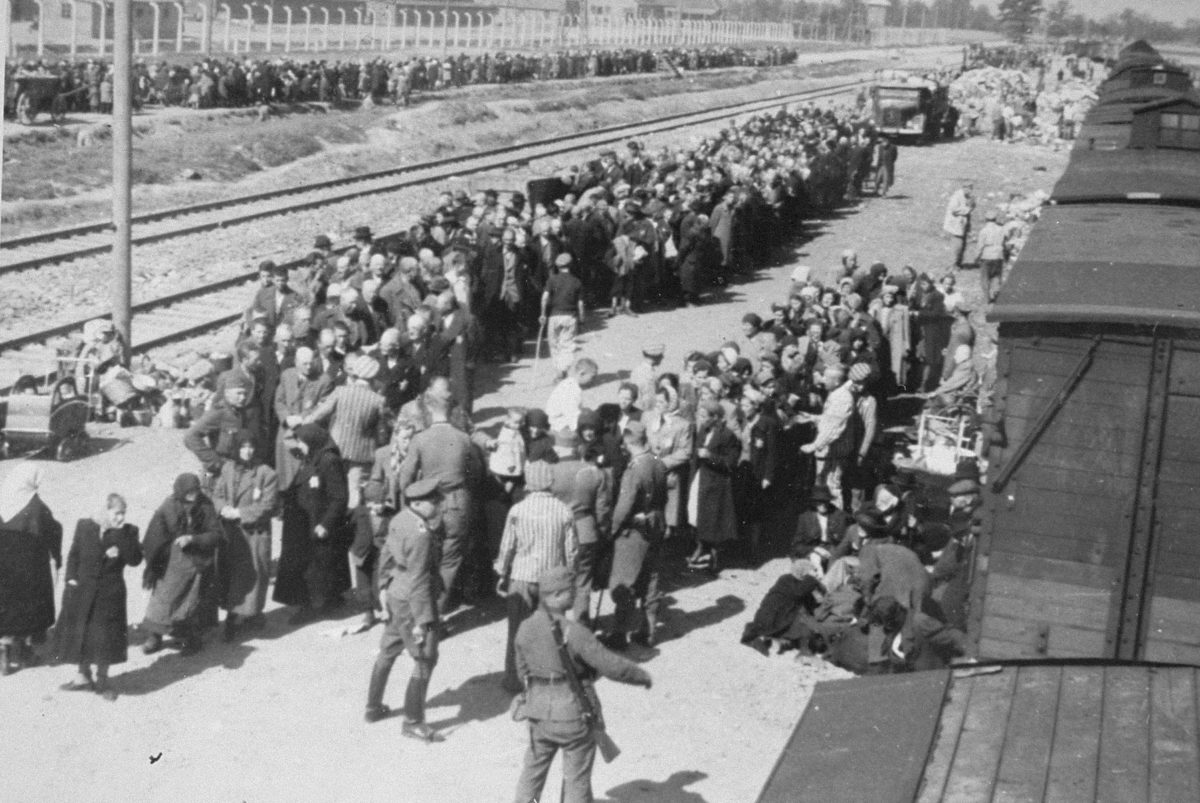
The last days of January were a struggle for life of those people that the Germans planned to annihilate at the camp. The prisoners – only several thousand of them left – survived and saw the camp being liberated. A couple of hours before their escape, the SS managed to blow up the last crematorium. Having entered the camp site, the liberators – Russian soldiers – saw pregnant, silent testaments of the crimes which were committed here for years. Barracks – six scorched warehouses containing the „goods” of the victims of the camp. The Germans did not manage to transport or destroy them: almost 350 thousand men’s suits, over 800 thousand women’s dresses and coats, thousands of shoes, piles of children’s clothes, countless glasses, shaving brushes, and dentures. The tannery contained piles of hair (W. Sofsky, The Order of Terror: The Concentration Camp, Warsaw, 2016, p. 356). All this was literally saturated with death.
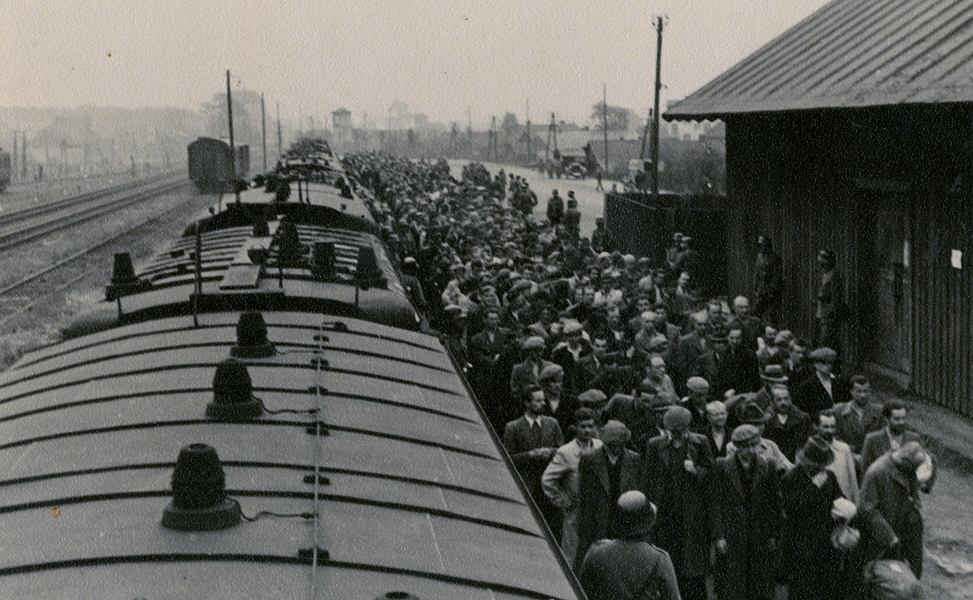
Surrounded by high-voltage barbed wire fences, KL Auschwitz–Birkenau’s objective was to isolate people, destroy spiritual and physical existence, and make the prisoners feel like animals. The camp’s regime of terror and misery removed any individual freedom of movement, dispelled any sense of timing, and put the prisoners in a perpetual state of dying (W. Sofsky, The Order of Terror: The Concentration Camp, Warsaw, 2016, p. 356). But the most important objective of the camp was to ensure the mass annihilation of humanity. Over 1.3 mn prisoners were sent to KL Auschwitz–Birkenau. Most of them – around 1.1 mn – were brutally murdered. Almost 1 million (around 960 thousand) of the victims were Jews – from Hungary (around 438 thousand), Poland (around 300 thousand), and other European countries. Tens of thousands of Poles, Romani, Russians, and people from other countries were murdered (D. Libionka, The Extermination of Jews in the General Government, Lublin, 2017, p. 238). All of this happened on the soil of Judeo-Christian civilisation – at the heart of Europe.
1 November 2005 witnessed the adoption of „Resolution 60/7” at the 42nd plenary session of the United Nations General Assembly, which marks the date 27 of January as the annual International Day of Commemoration in Memory of the Victims of the Holocaust. To commemorate the Jews murdered during WWII by Nazi Germany. This is a special date: the date on which the concentration and extermination camp Auschwitz–Birkenau was liberated. After sixty years. What matters is the remembrance.
Paweł Wieczorek – Doctor of humanities. Specialty: contemporary history. Cooperation: United States Holocaust Memorial Museum in Washington, the Jewish Historical Institute, and the Social and Cultural Association of Jews in Poland. Winner of Jewish Historical Institute’s Majer Bałaban contest for the best doctoral dissertation (2014). Participant of international research programme “Pogroms of Jews in the Polish lands in the 19th and 20th centuries” (2013-2016). Author of books and articles. Research interests: Polish-Jewish relations after 1945, Jewish social and political movements, national and ethnic minorities in Poland, cold war, and totalitarianism.
Photos: public domain
Sources – in chronological order:
K. Smoleń, Auschwitz 1940 – 1945, Auschwitz, 1965;
D. Czech, Konzentrationslager Auschwitz – Historical Records, [in:] Auschwitz. Nazi Extermination Camp, Warsaw, 1981;
T. Iwaszko, Prisoners, [in:] Auschwitz. Nazi Extermination Camp, Warsaw, 1981;
A. Strzelecki, The Liberation of the Camp and the Rescue Action of the Liberated Prisoners, [in:] Auschwitz. Nazi Extermination Camp, Warsaw, 1981;
Z. Jagoda, S.Kłodziński, J.Masłowski, The Prisoners of Auschwitz, Cracow – Wrocław, 1984;
L. Rees, Auschwitz: The Nazis & The ‚Final Solution’, Warsaw, 2005;
S. Friedlander, The Years of Extermination. Nazi Germany and the Jews 1939 – 1945, Warsaw, 2010;
W. Sofsky, The Order of Terror: The Concentration Camp, Warsaw, 2016;
N. Wachsmann, A History of the Nazi Concentration Camps, Warsaw, 2016;
D. Libionka, The Extermination of Jews in the General Government, Lublin 2017;
L. Rees, The Holocaust. A New History, Warsaw, 2018.
Translated by Michał Nowakowski (LIDEX)
